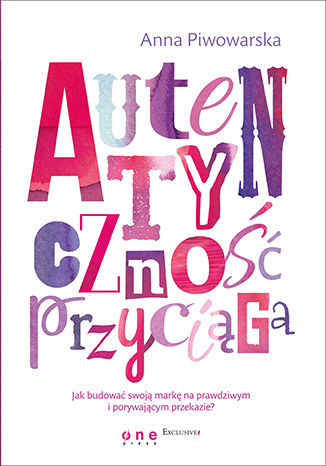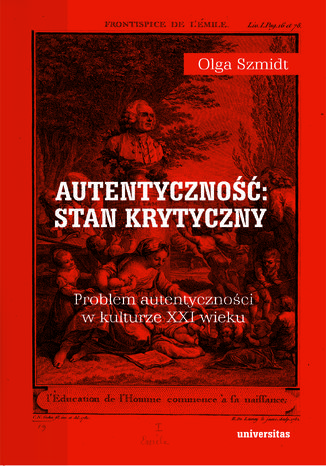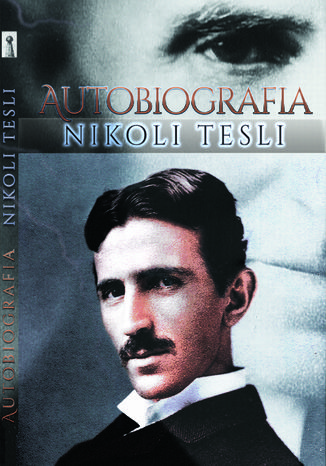Kategorien
E-Books
-
Wirtschaft
- Bitcoin
- Geschäftsfrau
- Coaching
- Controlling
- E-Business
- Ökonomie
- Finanzen
- Börse und Investitionen
- Persönliche Kompetenzen
- Computer im Büro
- Kommunikation und Verhandlungen
- Kleines Unternehmen
- Marketing
- Motivation
- Multimedia-Training
- Immobilien
- Überzeugung und NLP
- Steuern
- Sozialpolitik
- Handbȕcher
- Präsentationen
- Führung
- Public Relation
- Berichte, Analysen
- Geheimnis
- Social Media
- Verkauf
- Start-up
- Ihre Karriere
- Management
- Projektmanagement
- Personal (HR)
-
Für Kinder
-
Für Jugendliche
-
Bildung
-
Enzyklopädien, Wörterbücher
-
E-Presse
- Architektura i wnętrza
- Sicherheit und Gesundheit am Arbeitsplatz
- Biznes i Ekonomia
- Haus und Garten
- E-Business
- Ekonomia i finanse
- Esoterik
- Finanzen
- Persönliche Finanzen
- Unternehmen
- Fotografie
- Informatik
- HR und Gehaltsabrechnung
- Frauen
- Computer, Excel
- Buchhaltung
- Kultur und Literatur
- Wissenschaftlich und akademisch
- Umweltschutz
- meinungsbildend
- Bildung
- Steuern
- Reisen
- Psychologie
- Religion
- Landwirtschaft
- Buch- und Pressemarkt
- Transport und Spedition
- Gesundheit und Schönheit
-
Geschichte
-
Informatik
- Office-Programme
- Datenbank
- Bioinformatik
- IT Branche
- CAD/CAM
- Digital Lifestyle
- DTP
- Elektronik
- Digitale Fotografie
- Computergrafik
- Spiele
- Hacking
- Hardware
- IT w ekonomii
- Wissenschaftliche Pakete
- Schulbücher
- Computergrundlagen
- Programmierung
- Mobile-Programmierung
- Internet-Server
- Computernetzwerke
- Start-up
- Betriebssysteme
- Künstliche Inteligenz
- Technik für Kinder
- Webmaster
-
Andere
-
Fremdsprachen lernen
-
Kultur und Kunst
-
Lektüre
-
Literatur
- Anthologien
- Ballade
- Biografien und Autobiografien
- Für Erwachsene
- Drama
- Tagebücher, Memoiren, Briefe
- Epos
- Essay
- Science Fiction
- Felietonys
- Fiktion
- Humor, Satire
- Andere
- Klassisch
- Krimi
- Sachbücher
- Belletristik
- Mity i legendy
- Nobelpreisträger
- Kurzgeschichten
- Gesellschaftlich
- Okultyzm i magia
- Erzählung
- Erinnerungen
- Reisen
- Gedicht
- Poesie
- Politik
- Populärwissenschaftlich
- Roman
- Historischer Roman
- Prosa
- Abenteuer
- Journalismus
- Reportage
- Romans i literatura obyczajowa
- Sensation
- Thriller, Horror
- Interviews und Erinnerungen
-
Naturwissenschaften
-
Sozialwissenschaften
-
Schulbücher
-
Populärwissenschaft und akademisch
- Archäologie
- Bibliotekoznawstwo
- Filmwissenschaft
- Philologie
- Polnische Philologie
- Philosophie
- Finanse i bankowość
- Erdkunde
- Wirtschaft
- Handel. Weltwirtschaft
- Geschichte und Archäologie
- Kunst- und Architekturgeschichte
- Kulturwissenschaft
- Linguistik
- Literaturwissenschaft
- Logistik
- Mathematik
- Medizin
- Geisteswissenschaften
- Pädagogik
- Lehrmittel
- Populärwissenschaftlich
- Andere
- Psychologie
- Soziologie
- Theatrologie
- Teologie
- Theorien und Wirtschaftswissenschaften
- Transport i spedycja
- Sportunterricht
- Zarządzanie i marketing
-
Handbȕcher
-
Spielanleitungen
-
Professioneller und fachkundige Leitfaden
-
Jura
- Sicherheit und Gesundheit am Arbeitsplatz
- Geschichte
- Verkehrsregeln. Führerschein
- Rechtswissenschaften
- Gesundheitswesen
- Allgemeines. Wissenskompendium
- akademische Bücher
- Andere
- Bau- und Wohnungsrecht
- Zivilrecht
- Finanzrecht
- Wirtschaftsrecht
- Wirtschafts- und Handelsrecht
- Strafrecht
- Strafrecht. Kriminelle Taten. Kriminologie
- Internationales Recht
- Internationales und ausländisches Recht
- Gesundheitsschutzgesetz
- Bildungsrecht
- Steuerrecht
- Arbeits- und Sozialversicherungsrecht
- Öffentliches, Verfassungs- und Verwaltungsrecht
- Familien- und Vormundschaftsrecht
- Agrarrecht
- Sozialrecht, Arbeitsrecht
- EU-Recht
- Industrie
- Agrar- und Umweltschutz
- Wörterbücher und Enzyklopädien
- Öffentliche Auftragsvergabe
- Management
-
Führer und Reisen
- Afrika
- Alben
- Südamerika
- Mittel- und Nordamerika
- Australien, Neuseeland, Ozeanien
- Österreich
- Asien
- Balkan
- Naher Osten
- Bulgarien
- China
- Kroatien
- Tschechische Republik
- Dänemark
- Ägypten
- Estland
- Europa
- Frankreich
- Berge
- Griechenland
- Spanien
- Niederlande
- Island
- Litauen
- Lettland
- Mapy, Plany miast, Atlasy
- Miniführer
- Deutschland
- Norwegen
- Aktive Reisen
- Polen
- Portugal
- Andere
- Przewodniki po hotelach i restauracjach
- Russland
- Rumänien
- Slowakei
- Slowenien
- Schweiz
- Schweden
- Welt
- Türkei
- Ukraine
- Ungarn
- Großbritannien
- Italien
-
Psychologie
- Lebensphilosophien
- Kompetencje psychospołeczne
- zwischenmenschliche Kommunikation
- Mindfulness
- Allgemeines
- Überzeugung und NLP
- Akademische Psychologie
- Psychologie von Seele und Geist
- Arbeitspsychologie
- Relacje i związki
- Elternschafts- und Kinderpsychologie
- Problemlösung
- Intellektuelle Entwicklung
- Geheimnis
- Sexualität
- Verführung
- Aussehen ind Image
- Lebensphilosophien
-
Religion
-
Sport, Fitness, Diäten
-
Technik und Mechanik
Hörbücher
-
Wirtschaft
- Bitcoin
- Geschäftsfrau
- Coaching
- Controlling
- E-Business
- Ökonomie
- Finanzen
- Börse und Investitionen
- Persönliche Kompetenzen
- Kommunikation und Verhandlungen
- Kleines Unternehmen
- Marketing
- Motivation
- Immobilien
- Überzeugung und NLP
- Steuern
- Sozialpolitik
- Handbȕcher
- Präsentationen
- Führung
- Public Relation
- Geheimnis
- Social Media
- Verkauf
- Start-up
- Ihre Karriere
- Management
- Projektmanagement
- Personal (HR)
-
Für Kinder
-
Für Jugendliche
-
Bildung
-
Enzyklopädien, Wörterbücher
-
E-Presse
-
Geschichte
-
Informatik
-
Andere
-
Fremdsprachen lernen
-
Kultur und Kunst
-
Lektüre
-
Literatur
- Anthologien
- Ballade
- Biografien und Autobiografien
- Für Erwachsene
- Drama
- Tagebücher, Memoiren, Briefe
- Epos
- Essay
- Science Fiction
- Felietonys
- Fiktion
- Humor, Satire
- Andere
- Klassisch
- Krimi
- Sachbücher
- Belletristik
- Mity i legendy
- Nobelpreisträger
- Kurzgeschichten
- Gesellschaftlich
- Okultyzm i magia
- Erzählung
- Erinnerungen
- Reisen
- Poesie
- Politik
- Populärwissenschaftlich
- Roman
- Historischer Roman
- Prosa
- Abenteuer
- Journalismus
- Reportage
- Romans i literatura obyczajowa
- Sensation
- Thriller, Horror
- Interviews und Erinnerungen
-
Naturwissenschaften
-
Sozialwissenschaften
-
Populärwissenschaft und akademisch
- Archäologie
- Philosophie
- Wirtschaft
- Handel. Weltwirtschaft
- Geschichte und Archäologie
- Kunst- und Architekturgeschichte
- Kulturwissenschaft
- Literaturwissenschaft
- Mathematik
- Medizin
- Geisteswissenschaften
- Pädagogik
- Lehrmittel
- Populärwissenschaftlich
- Andere
- Psychologie
- Soziologie
- Teologie
- Zarządzanie i marketing
-
Handbȕcher
-
Professioneller und fachkundige Leitfaden
-
Jura
-
Führer und Reisen
-
Psychologie
- Lebensphilosophien
- zwischenmenschliche Kommunikation
- Mindfulness
- Allgemeines
- Überzeugung und NLP
- Akademische Psychologie
- Psychologie von Seele und Geist
- Arbeitspsychologie
- Relacje i związki
- Elternschafts- und Kinderpsychologie
- Problemlösung
- Intellektuelle Entwicklung
- Geheimnis
- Sexualität
- Verführung
- Aussehen ind Image
- Lebensphilosophien
-
Religion
-
Sport, Fitness, Diäten
-
Technik und Mechanik
Videokurse
-
Datenbank
-
Big Data
-
Biznes, ekonomia i marketing
-
Cybersicherheit
-
Data Science
-
DevOps
-
Für Kinder
-
Elektronik
-
Grafik / Video / CAX
-
Spiele
-
Microsoft Office
-
Entwicklungstools
-
Programmierung
-
Persönliche Entwicklung
-
Computernetzwerke
-
Betriebssysteme
-
Softwaretest
-
Mobile Geräte
-
UX/UI
-
Web development
-
Management
Podcasts
„Australczyk” to powieść autorstwa Elizy Orzeszkowej, jednej z najważniejszych pisarek polskich, epoki pozytywizmu. Powieść obyczajowa Elizy Orzeszkowej, której akcja rozgrywa się pod koniec XIX wieku. Jej tematem są różne drogi dążenia młodzieży do osiągnięcia kariery i majątku. Wpleciono też do akcji powieści delikatny wątek romansowy.
Australia. Zielony Przewodnik. Wydanie 1
Ruszajcie w świat z przewodnikami Michelina! W trzech częściach Zielonego Przewodnika znajdziecie niezbędne informacje, dzięki którym odkryjecie cel Waszej podróży: Organizacja podróży - informacje przydatne przed wyjazdem i w trakcie podróży Informacje krajoznawcze - wiadomości geograficzno-historyczne i kulturowe Odkrywanie Australii - trasy zwiedzania i opisy interesujących miejsc Gwiazdki - tradycyjny system oceny atrakcji turystycznych ***zobacz koniecznie **warto odwiedzić *godne uwagi Pełny zestaw dokładnych map: Proponowane trasy wycieczek Plany miast i regionów Wybrane adresy na każdą kieszeń: Hotele, pokoje gościnne, restauracje, bary Miejsca i atrakcje dla rodzin z dziećmi
Austria i relacje polsko-austriackie w XX i XXI wieku. Polityka - kultura - gospodarka
Krzysztof A. Kuczyński, Agnieszka Kisztelińska-Węgrzyńska
Kontekst polski tematu „Austria” był i jest naturalnym zagadnieniem licznych prac. Tematem tym ze strony polskiej zajmowali się m.in.: Henryk Batowski, Józef Buszko, Stefan H. Kaszyński, Jerzy Kozeński, Władysław Stanisław Kucharski, Roman Taborski, Henryk Wereszycki. Są to ludzie nauki z różnych dziedzin: historycy, germaniści i poloniści. Patrząc kompleksowo na dorobek strony polskiej odnośnie do badań nad historią i kulturą Austrii, odbiorca w naszym kraju ma dobre możliwości zapoznania się z tematyką naddunajskiego państwa. Intensywna współpraca polsko-austriacka w XX wieku, która zwielokrotniła się jeszcze zwłaszcza w ostatnich dziesięcioleciach, niezwykle ciekawe zjawiska w kulturze austriackiej minionego stulecia i działalność wielkich postaci polsko-austriackiego „pogranicza” w dziedzinie polityki, gospodarki czy literatury, zachęcają do kolejnych badań bądź niejako je „wymuszają”. Niniejsza publikacja zawiera najnowsze badania charakteryzujące stosunki polsko-austriackie. Wielu autorów z polskich i zagranicznych ośrodków badawczych omawia kluczowe problemy związane z relacjami obu państw w ciągu ostatnich stu lat. Czytelnik znajdzie wśród nich kwestie literaturoznawcze, polonijne, dyplomatyczne, demograficzne, integracyjne, jak i dotyczące bezpieczeństwa energetycznego.
Austria. Travelbook. Wydanie 1
Austria kojarzy się polskim turystom przede wszystkim z zimowym wypoczynkiem na stokach narciarskich, wiedeńskimi klasykami, tortem Sachera lub... jodłowaniem. Tymczasem ten niewielki kraj ma do zaproponowania znacznie więcej niespodziewanych atrakcji. Alpy oferują tysiące kilometrów szlaków pieszych i rowerowych. Krajobraz współtworzą tu potężne góry, sielskie łąki, bajkowe zamki, surowe twierdze i strzeliste wieże kościołów, miasta zaś przyciągają świetnie zachowaną zabytkową architekturą i bogatą ofertą kulturalną. Warto odkryć Austrię! Secesyjny Wiedeń i modry Dunaj Zabytki epoki Habsbugów Alpejskie trasy krajobrazowe Jeziora, wodospady i jaskinie Zjawiskowe parki narodowe Kuchnia wielu narodów Travelbook to Twój niezastąpiony towarzysz podróży. Wskaże Ci najważniejsze atrakcje, podpowie, czego szukać poza głównymi szlakami, i wprowadzi w świat miejscowych obyczajów. Znajdziesz w nim opisy najciekawszych regionów i miast, a sprawdzone informacje praktyczne umożliwią staranne zaplanowanie podróży.
Agnieszka Kisztelińska-Węgrzyńska
„Austria jako temat obecny w polskim dyskursie publicznym posiada dwa zasadnicze wątki przewodnie: przeszłość i kulturę. Do wspólnych doświadczeń, relacji, mitów, dokonań, stosunków gospodarczych dziedziczonych i panujących odwołują się zarówno autorzy analizowanych tekstów, jak i współcześni badacze. Kultura zaś systemowo wzmacniana przez Wiedeń od wieków znajdowała w naszym kraju grono aktywnych odbiorców. Współcześnie kultura ukazuje się jako swoista marka młodej, aktywnej republiki, z jednej strony nawiązującej do tego, co we wspólnocie niemieckojęzycznej ważne i godne naśladowania, z drugiej zaś wyznaczająca własne drogi, wartości i cele.” Ze wstępu… Austria w polskim dyskursie publicznym po 1945 roku to publikacja wymykająca się uproszczonej, jednoznacznej klasyfikacji jako zbiorowego wydawnictwa naukowego poświęconego powojennym relacjom polsko-austriackim i ich badawczej recepcji. Obecność tekstów źródłowych reprezentujących różne obszary ekspresji językowej (od danych statystycznych, poprzez zapis relacji ustnych, publicystykę, a wreszcie po literaturę piękną) każe dopatrywać się w niej respektującego szeroki kontekst interdyscyplinarny dokumentu historycznego. Zaś kompetentny, prowadzony z różnych punktów widzenia (bo przyjmujący perspektywę polską i austriacką) komentarz międzynarodowego kolegium autorskiego stanowi, bez wątpienia, inspirujący przyczynek do analizy zagadnienia, które w polskim piśmiennictwie naukowym nie znalazło jeszcze precedensu, sytuując publikację w kręgu tekstów aspirujących do miana komponentu całościowego namysłu na temat europejskiej historii najnowszej. Nowoczesna metodologia traktująca dyskurs jako podstawowe narzędzie i materiał badawczy pozwala wnikliwiej przyjrzeć się powojennym obrazom austriackim, a wzmiankowane już włączenie do antologii autentycznych materiałów archiwalnych, każe potraktować Austrię w polskim dyskursie publicznym po 1945 roku jako wartościową lekturę dla "austriofilów", historyków, kulturoznawców, socjologów, prasoznawców, językoznawców oraz (a może przede wszystkim)... czytelników pragnących świadomie współuczestniczyć w procesie tworzenia narracji historycznych. Agnieszka Kisztelińska–Węgrzyńska – historyk, adiunkt na Wydziale Studiów Międzynarodowych i Politologicznych Uniwersytetu Łódzkiego. Zajmuje się historią dyplomacji i relacjami polsko-austriackimi. Autorka monografii- RFN w poglądach i dyplomacji Johna Fostera Dullesa w latach 1953-1959, współredaktorka prac zbiorowych na tematy austriackie min. Austria i relacje polsko-austriackie w XX i XXI wieku. Publikowała teksty w Przeglądzie Zachodnim i Roczniku Polsko-Niemieckim. Od kilku lat współpracuje z Austriackim Forum Kultury nad projektami związanymi z dziejami współczesnej Austrii.
Autentyczność stanowi jedną z podstawowych kategorii organizujących życie (po)nowoczesnej kultury. W zasięgu jej wpływów znajdują się bardzo różne praktyki: od ruchów rewolucyjnych, które rozwijają metafory jurydyczne, poprzez wielopostaciową mizantropię, różne formy eskapizmu i zwrotu ku naturze, po wywyższenie intymności. Piotr Wąsowski zakreśla bardzo szerokie pole badawcze, a następnie problematyzuje tytułowy termin, wychodząc od pism Rousseau i wydobywając z nich centralny paradoks: naturalności nie sposób osiągnąć poza obszarem kulturowej sztuczności. Korzysta on z rozmaitych słowników nowoczesnej humanistyki, by naświetlić powiązanie autentyczności ze szczerością i samostanowieniem podmiotu oraz jej konflikt z konwencjami społecznymi. W ten sposób przygotowuje grunt pod szczegółowe analizy, poświęcone odpowiednio melancholijnemu pisarstwu podróżniczemu Andrzeja Stasiuka, antyhipokrytycznej prozie Doroty Masłowskiej, post-utopijnej fantazji urbanistycznej Magdaleny Tulli oraz powieści Marka Bieńczyka, która transponuje te kwestie na teren refleksji o Zagładzie. Rozprawa łączy w sposób udatny dociekania literaturoznawcze z refleksją antropologiczną, socjologiczną i kulturoznawczą oraz proponuje intrygujące interpretacje najnowszej literatury polskiej. Z recenzji dr. hab. Jerzego Franczaka, prof. UJ Książkę Piotra Wąsowskiego czyta się z przyjemnością i pożytkiem poznawczym. Jest napisana eleganckim stylem o zacięciu eseistycznym. Autor proponuje refleksję nad nową literaturą polską (przede wszystkim z okresu dwudziestolecia 1989-2010) z użyciem kategorii mało obecnych w dotychczasowych badaniach i choć podejmuje się odczytań pisarzy posiadających spore już biblioteczki opracowań, pisarzy głośnych a wręcz modnych, to udaje mu się zająć w dociekaniach i interpretacjach stanowisko własne. Kompetencje filozoficzne autora są wyższe niż od literaturoznawcy można wymagać. Wszystkie rozdziały interpretacyjne demonstrują umiejętność tworzenia efektownych formuł krytycznoliterackich, takich jakich oczekujemy od dobrej recenzji lub szkicu krytycznoliterackiego, albo też właśnie eseju literaturoznawczego. Z recenzji dr. hab. Piotra Sobolczyka, prof. IBL
Autentyczność przyciąga. Jak budować swoją markę na prawdziwym i porywającym przekazie?
Autentyczność w biznesie pozwala ci być sobą w tym, co robisz! Wyróżnia ciebie i twoje usługi oraz sprawia, że twoja marka staje się nie do podrobienia. Pozwala ci też docierać do właściwych odbiorców — twoich idealnych klientów. Bo autentyczność ma moc przyciągania! Poradniki biznesowe często przekazują wiedzę oraz zasady, których należy przestrzegać przy budowaniu swojej marki i rozwijaniu firmy, ale bardzo rzadko wspierają w podejmowaniu samodzielnych decyzji, wybieraniu tego, co jest najlepsze akurat dla ciebie, poznawaniu siebie i słuchaniu własnej intuicji. Tym razem jest inaczej! Masz przed sobą praktyczny przewodnik zawierający mnóstwo ćwiczeń, pytań, które należy sobie postawić, a także przykładów tekstów i osób, które zaczęły budować swoją działalność na autentycznym przekazie — pochodzącym z ich wnętrza, czyli zgodnym z tym, kim są, w co wierzą i co jest dla nich ważne. Książka pomoże ci w budowaniu swojej marki (osobistej i firmowej) w sposób autentyczny, który będzie jednocześnie atrakcyjny dla twoich klientów. Przeczytaj ją i sprawdź, czy to podejście jest dla ciebie. Jeśli tak — zacznij działać! Zagadnienia poruszane w książce są bliskie nowym trendom w marketingu, takim jak personal branding, storytelling, content marketing. Budowanie marki na autentycznym przekazie to prawdziwa rewolucja w podejściu do biznesu!
Atakowani przez szybkie zmiany i bombardowani natłokiem informacji nie jesteśmy w stanie przyswoić wszystkich danych. Podświadomie wychwytujemy więc sygnały o tym, co prawdziwe. I do tego lgniemy. Wyczerpani sprzedawaniem siebie, stawianiem się w dobrym świetle i udawaniem, przestajemy drżeć o własny wizerunek. Odpuszczamy. Zwracamy się ku tym, którzy wydają się na tyle naturalni, by móc im ufać. I sami się tacy stajemy. Zdaniem socjologów robimy właśnie historyczny zwrot ku autentyczności. Dorota Mierzejewska-Floreani, Radary na prawdziwość ("Zwierciadło" nr 5/2017) Autentyczność jako trend marketingowy cały czas się rozpowszechnia. Pierwsze wydanie książki ukazało się w 2015 roku. Trafiła ona na listy marketingowych bestsellerów i wzbudziła zainteresowanie mediów. Ale przede wszystkim skłoniła setki osób do przyglądania się sobie, zadawania sobie ważnych pytań i szukania własnej drogi do autentyczności - w biznesie i w życiu. Budowanie marki na autentycznym przekazie to wciąż rewolucja w podejściu do biznesu! Autentyczność w biznesie pozwala Ci być sobą w tym, co robisz. Wyróżnia Ciebie i Twoje usługi. Sprawia, że Twoja marka staje się nie do podrobienia. Dzięki temu możesz docierać do właściwych osób - Twoich idealnych klientów. Bo autentyczność ma moc przyciągania! Masz przed sobą praktyczny przewodnik zawierający mnóstwo ćwiczeń oraz pytań, które warto sobie postawić. Książka pokazuje też przykłady osób, które zaczęły budować swoją działalność na szczerym przekazie - pochodzącym z ich wnętrza, czyli zgodnym z tym, kim są, w co wierzą i co jest dla nich ważne. Drugie wydanie książki zostało wzbogacone o 40 inspirujących ćwiczeń. Nowe ćwiczenia - w pięknej oprawie graficznej - zachęcają do przyglądania się sobie, poznawania i pokazywania siebie. Pomogą Ci wydobyć na zewnątrz to, co jest w Tobie najbardziej wartościowe i wyjątkowe. Zainspirują do łapania myśli w locie oraz twórczej zabawy. Pracuj z książką! Notuj swoje pomysły, podkreślaj to, co chcesz zapamiętać, rysuj, bazgraj i pisz bez obaw. Dzięki temu Twój egzemplarz będzie jedyny i niepowtarzalny - taki jak Ty. Źródło: https://www.marketingtopodstawa.com Zrozumienie idei autentyczności to obecnie podstawa działań biznesowych i komunikacyjnych. Dotyczy to w szczególności firm, które chcą być postrzegane jako innowacyjne. To ich pracownikom, menedżerom i właścicielom poleciłabym tę książkę w pierwszej kolejności. Magdalena Jaworowicz, autorka książki Copywriting w zintegrowanej komunikacji marketingowej Trzy lata temu książkę Ani czytało się jak opowieść o trendzie. Na szczęście dziś autentyczność to nie tylko biznesowa konieczność, ale coraz częściej także codzienność dużych i małych organizacji. A książka Ani to wciąż świetny przewodnik, jak się odnaleźć w takiej rzeczywistości. Marzena Tajchman, konsultantka komunikacji wewnętrznej, www.czesciwspolne.pl Czuję się osobiście związana z książką Autentyczność przyciąga. Dlaczego? Bo to Ania uświadomiła mi, jak ważne jest autentyczne pisanie. Nie ma co ukrywać - Ania jest jedną z matek chrzestnych Pani Swojego Czasu. Ola Budzyńska, Pani Swojego Czasu, www.paniswojegoczasu.pl Autentyczności nie da się zaplanować ani nauczyć, ale można ją z siebie wydobyć. Mnie książka Ani skontaktowała z tym, co naprawdę chcę dawać innym od siebie. Jest dla wszystkich, którzy nie znoszą udawania. Łada Drozda, autorka książki Na arenie biznesu. Z życia coacha i szkoleniowca oraz audycji Emocjonalny Ład na antenie radia Chillizet Książka Ani uwiodła mnie z wielu powodów. Przede wszystkim podpowiada, jak pracować nad swoim przekazem do świata, aby był szczery, prawdziwy i przejrzysty. Co ważne, opiera się na konkretnych przykładach i historiach, nie teoretyzując. A jednocześnie na każdym kroku podkreśla, jak ważnym dla każdego z nas, nie tylko dla osób działających w biznesie, jest dogłębne poznanie siebie, bez którego trudno osiągnąć jakikolwiek sukces, zarówno osobisty, jak i zawodowy. Anna Mularczyk-Meyer, autorka książek Minimalizm po polsku, Minimalizm dla zaawansowanych, www.prostyblog.pl Przejedliśmy się sztucznością. W pogoni za perfekcjonizmem pogubiliśmy siebie, klientów i jakość usług. Ubrania wytrzymują zaledwie miesiąc. Jedzenie nie psuje się trzy lata. Nasze pogubienie budzi tęsknotę za autentycznością, która przybiera na sile, a to daje nadzieję na powrót do prawdy - i w biznesie, i w życiu. To książka dla wszystkich tych, którzy wiedzą, że nic tak nie przyciąga klientów jak zaufanie. A zaufanie buduje się na prawdzie. Joanna Chmura, psycholog specjalizujący się w tematyce wstydu i odwagi, www.joannachmura.pl Autentyczność i poradnik Ani Piwowarskiej były dla mnie jak koło ratunkowe w momencie budowania własnej marki. Co za ulga! Nie muszę pisać w chłodny i "profesjonalny" sposób, naśladując duże korporacje! Mogę mówić własnym głosem, bez ukrywania się za frazesami. Dziś wiem, że takie właśnie autentyczne podejście pozwoliło mi zdobyć zaufanie klientek w bardzo konkurencyjnej branży kursów fotograficznych! Dominika Dzikowska, Kobieca Foto Szkoła, www.kobiecafotoszkola.pl Mogę śmiało powiedzieć, że jest to jedna z najlepszych książek tego typu, jakie miałam w rękach. Jest napisana prostym, przystępnym językiem i nie obiecuje cudów, ale daje nam coś więcej. Dostajemy narzędzia i wiedzę, która pozwala nam zmienić nasz sposób myślenia nie tylko o pisaniu, ale i o sobie jako marce. Iwona Czyżykowska, autorka bloga o książkach, www.czytajac.pl Autentyczność przestaje być tylko pustym słowem, którym zręcznie operują media, bo na stronicach tego niezwykłego poradnika dochodzi do pewnego cudu stworzenia. Zaczynamy czuć i rozumieć, co spełni nas zawodowo, bo zaangażuje niepowtarzalną kombinację naszych zasobów, sprawi nam frajdę i odzwierciedli nasze wartości. A więc czytaj, rób biznes, zarabiaj, czuj flow. Dorota Mierzejewska-Floreani, psycholog, dziennikarz Czym jest autentyczność? Zobacz!
Autentyczność: stan krytyczny. Problem autentyczności w kulturze XXI wieku
„Wszystko jest obłędem i sprzecznością w urządzeniach ludzkich” – pisze Jean-Jacques Rousseau, jeden z najważniejszych myślicieli oświeceniowych, ten, od którego pism rozpoczyna swą wielką karierę pojęcie autentyczności. Trudna historia autentyczności odciska się na współczesnym statusie tego zjawiska – wielokrotnie skompromitowanego, ale zarazem nieznośnie obecnego także w XXI wieku. Niniejsza książka stanowi próbę analizy autentyczności jako wyzwania we współczesności. Ale nie tylko. W książce Autentyczność: stan krytyczny. Problem autentyczności w kulturze XXI wieku tytułowa idea jawi się zarówno jako narzędzie krytyczne, problem z zakresu historii idei, wyzwanie egzystencjalne, projekt estetyczny i artystyczny, jak i ważne zagadnienie polityczne. Transnarodowy i transdyscyplinarny charakter pracy pozwala na ujęcie tych kwestii w możliwie najszerszym wymiarze i postawienie pytań wywodzących się z różnych porządków. Złożoność idei autentyczności jest przez autorkę analizowana zarówno w wymiarze teoretycznym, jak i poszczególnych realizacji artystycznych. Obok krytycznej rewizji dziedzictwa oświecenia pojawiają się odkrywcze interpretacje m.in. performansów Mariny Abramović, serialu Dziewczyny czy współczesnych miejskich utopii. Książka ta stanowi ważny głos w dyskusji toczonej na temat kondycji podmiotu. Skutecznie też przekonuje o nieoczekiwanej aktualności idei autentyczności.
Transakcje kupna oraz sprzedaży aut, jak również wydatki na ich eksploatację często sprawiają problemy w zakresie ewidencji w księgach rachunkowych. W e-booku przedstawiono przykłady rozliczeń, które mogą pomóc przy tych czynnościach. Dodatkowo poruszono również temat samochodu zastępczego udostępnionego nieodpłatnie głównie w ramach wykupionego ubezpieczenia AC. Powstaje wtedy pytanie, jak rozliczyć różnego rodzaju wydatki związane z ich eksploatacją, np. tytułem zapłaty za paliwo. Ekspert wyjaśnia, jak zrobić to poprawnie.
Chesterton - Mistrz Absurdu - napisał w sumie 80 książek. Autobiografia jest obowiązkową lekturą dla wszystkich fanów tego ukochanego przez miliony autora. Autobiografia tchnie radością i pogodą ducha. Chesterton chętnie zresztą wyjawia, skąd wzięła się ta radość. Nie jest bowiem prawdą, że urodził się już ze słonecznym usposobieniem, które zdołało mu ozłocić nieprzyjemny świat. Jego usposobienie, a nawet w znacznym stopniu jego humor, to cechy wypracowane dzięki specyficznemu podejściu do życia. Radość Chestertona opierała się na wdzięczności. Życie jest wspaniałym darem, którym można się szczerze rozkoszować, a gdzieś w muzyce sfer pobrzmiewa śmiech Pana Boga. Fragment z przedmowy Jagi Rydzewskiej
Autobiografia. Daniel C. Dennett
Autobiografia jednego z największych myślicieli naszych czasów Daniel C. Dennett, wybitny filozof i kognitywista, spędził swoje życie, rozważając najtrudniejsze i najbardziej fundamentalne tajemnice umysłu. Jego teorie w dużej mierze ukształtowały naszą epokę myśli filozoficznej. Motorem jego działań zawsze była niepohamowana ciekawość, dlatego chętnie próbował nowych rzeczy. Majstrował przy starych garbusach, wyrabiał cydr, grał na fortepianie w klubach jazzowych, rzeźbił i żeglował. Robiąc to wszystko - stale myślał, kwestionował rzeczywistość, zadawał pytania. I nigdy nie przestał się mylić. Myślę, że życie jest cenne, właśnie dlatego, że nie ma żadnego życia po życiu. Nie schrzań więc tego. Masz tylko jedną szansę. Jestem tak bardzo wdzięczny, że ją dostałem. Daniel C. Dennett, cytat z filmu Do Lobsters Have Free Will? (scenariusz i reżyseria: Karol Jałochowski) Pamiętam też, jak zostałem kiedyś zapytany lekkomyślnie, czy naprawdę nie wierzę w istnienie jakiejś wszechogarniającej, transcendentalnej mocy kontrolującej Wszechświat i całe zanurzone w nim życie. "O tak, wierzę" - odpowiedziałem. "Naprawdę?" "Tak - odparłem. - Nazywam ją grawitacją". Daniel C. Dennett (z wywiadu zamieszczonego w książce Karola Jałochowskiego Heretycy, buntownicy, wizjonerzy. 22 podróże z największymi umysłami naszych czasów, CCPress 2019)
Niezwykle ciekawa autobiografia, której autorem jest Booker Taliaferro Washington (1856-1915) amerykański działacz oświatowy i polityczny, pisarz oraz nauczyciel. Urodził się w stanie Wirginia jako niewolnik, ponieważ jego matka była niewolnicą. Wolnym człowiekiem stał się po zakończeniu wojny secesyjnej, kiedy to zniesiono niewolnictwo w całych Stanach Zjednoczonych. Aby się utrzymać, pracował przez kilka lat w kopalni węgla. Chcąc zdobyć wykształcenie, wstąpił na Hampton University (wówczas Hampton Normal and Agricultural Institute), uczelnię dla czarnoskórych, gdzie również pracował, aby pokryć koszty nauki. Uczęszczał też do college'u w Wayland Seminary (obecnie Virginia Union University). Washington był bardzo ważną postacią społeczności czarnoskórych Amerykanów w latach 1890-1915. Zorganizował i od 1881 roku prowadził szkołę ekonomiczną dla Afroamerykanów w Tuskegee w Alabamie. W 1900 roku założył Krajową Ligę Biznesu Murzyńskiego (National Negro Business League). We współpracy z zawodowym literatem Maxem Bennettem Thrasherem i socjologiem Robertem E. Parkiem, napisał autobiografię Up from Slavery (1901) oraz cztery inne książki. (Za Wikipedią).
Pełna anegdot, zwrotów akcji i zaskakujących zdarzeń rodzinna saga, w której zwierzęta i ludzie grają równoprawne role. Historia zaczyna się na Wołyniu, gdzie pradziadek autorki, hrabia Adam Halka Ledóchowski, zakochany od pierwszego wejrzenia w pięknej Tatarce, porywa ją i poślubia. Wbrew konwenansom, w imię romantycznej miłości i wspólnej pasji do koni, żyją długo i szczęśliwie dając początek dynastii, ludzi mądrych, pełnych fantazji i wielkich miłośników zwierząt. Zagłębiając się w rodzinną sagę Doroty Sumińskiej, poznajemy również pokolenia zwierzęcych towarzyszy rodziny. Ważni bohaterowie tej książki: krowa, wilczyca, kura, pies, kot, słoń, koń, jeż i wiele innych są najbliższymi przyjaciółmi, kochającymi i wspierającymi Dorotę Sumińską od dziecka. Zwierzęta towarzyszą jej na każdym kroku, przy wszystkich dolach i niedolach. Autorka, opowiadając o swoich losach, dzieli się też przemyśleniami o namiętnościach, kolejach losu i trudnych wyborach, a ponieważ robi to z humorem i bezpretensjonalnością, książkę czyta się, jak awanturniczy romans o życiu, miłości i pasji. Książka opatrzona rodzinnymi zdjęciami, wśród których znajdą się również fotografie zwierzęcych krewnych rodziny. Dorota Sumińska (ur. 1957) doktor weterynarii z wieloletnią praktyką, psycholog zwierzęcy z zamiłowania, od kilku lat prowadząca popularne radiowe i telewizyjne programy o zwierzętach (. w TVP1 Zwierzowiec program będący kontynuacją Zwierzyńca oraz Zwierzenia na cztery łapy w I programie Polskiego Radia). Autorka poradników i książek o zwierzętach: Szczęśliwy kot, Szczęśliwy pies, Do serca przytul psa i Trudne tematy.
Nikola Tesla wedle różnych podań miał przyjść na świat o północy, w trakcie letniej burzy z piorunami. Miał 63 lata, kiedy tekst tej książki ukazał się po raz pierwszy w czasopiśmie „Electrical Experimenter” w 1919 roku. Moje wynalazki. Autobiografia Nikoli Tesli to pozycja, którą wybitny konstruktor i wynalazca poświęcił w szczególności młodym pasjonatom inżynierii elektrycznej, dzieląc się z nimi wspomnieniami pasjonującej i trudnej drogi życia wynalazcy. Nie jest to klasyczna biografia, ale przepleciona wątkami biograficznymi, napisana w przystępny dla każdego sposób opowieść o wynalazkach i wydarzeniach, które poprzedziły ich powstanie. Jest kilka powodów, dla których „Moje Wynalazki. Autobiografia Nikoli Tesli” jest książką niezwykle wartościową zarówno dla młodych osób poszukujących drogi działalności naukowej bądź twórczej, jak i tych, którzy już tę drogę wybrali. Pokazuje ona prometeizm naukowca wierzącego w siłę ludzkiego umysłu oraz przeplatanie się chwil triumfu z chwilami gorzkiego rozczarowania. W niniejszej pozycji Czytelnicy będą mogli odnaleźć wiadomości, które pozwolą im wniknąć nie tylko w dorobek wybitnego wynalazcy, ale także w pewnym sensie podążyć jego śladem, w czym pomocna okaże się m.in. proponowana przez Teslę literatura oraz liczne opisy. Wartość tej książki kryje się w intencjach, które przyświecały genialnemu inżynierowi przy spisywaniu treści wywiadu adresowanego do młodych wynalazców. Może ona stać się źródłem inspiracji, motywacji i nośnikiem wiedzy, ale także być przestrogą przed dualizmem ludzkiej natury. Posiada potencjał dydaktyczny opatrzony dozą solidnej dawki informacji odnośnie tego, które ze swoich wynalazków dojrzały Nikola Tesla cenił najbardziej i dlaczego je wyróżnił.
Wyjątkowa książka autobiografia pośmiertna Witolda Gombrowicza opowiedziana jego własnymi słowami Można przeczytać w niej to, co sam Gombrowicz napisał o swoim życiu, rodzinie, przyjaciołach, o Polsce, Argentynie, Europie, o literaturze, sztuce, religii, filozofii; jak komentował własne utwory i najważniejsze dla pisarza idee XX wieku. Jest portretem duchowym Gombrowicza zawartym w jednym tomie. Książka niezbędna dla wszystkich, którzy nie przeczytali kilkunastu tomów utworów pisarza; pomocna dla każdego, kto chciałby przypomnieć sobie wcześniejsze lektury. Po swoim świecie oprowadza sam Gombrowicz. Teksty wybrał i ułożył Włodzimierz Bolecki. Wiatr pseudo-jesienny porywa i mnie, i gna wraz ze mną a zawsze w przeszłość ma on przywilej wywoływania we mnie przeszłości i nieraz godzinami poddaję się mu, siedząc gdzieś na ławce. Tam, przewiany, usiłuję dokonać rzeczy nad siły a tak upragnionej nawiązać z Witoldem Gombrowiczem do epok niepowrotnych. Witold Gombrowicz, 1954
Autobiografia w listach Przedmowa W roku 1896 -- dawne to zatem dzieje --- zamierzając umieścić w ,,Nouvelle Revue", której od lat kilku w zakresie rzeczy tyczących się Polski byłem stałym współpracownikiem, dłuższy artykuł o działalności literackiej znakomitej naszej autorki, zgłosiłem się do niej z prośbą, aby mi udzielić raczyła niektórych szczegółów, rzucających światło na jej życie, twórczość duchową, na myśli, wierzenia, poglądy i przekonania społeczne. Wtenczas to, ku wielkiemu memu a radosnemu zdziwieniu, otrzymałem ten oto pamiętnik, zawierający w sobie prawdziwą, szczerą, obszerną autobiografię. Sądzę, że podając ją dzisiaj szerszym kołom publiczności, nie uchybiam czci należnej wielkiej pamięci naszej narodowej pisarki. Wzniosłe i pięknie myśli, jak dobre ziarno, winny być rozsiane, aby z nich w duszach wyrosły bujne, czerstwe kłosy błogosławionego i zbawiennego żniwa. Praca moja pod tytułem ogólnym Les femmes auteurs en Pologne (M-me Elisé Orzeszko) ukazała się w ,,Nouvelle Revue" na początku 1897 r. ,,Numer Przeglądu Francuskiego -- pisała do mnie ta, którą dzisiaj opłakujemy, z Wiesbadenu pod datą 14 września tegoż samego roku -- z uszczęśliwiającym mnie artykułem Szanownego Pana przybył do Grodna już po wyjeździe moim stamtąd, niezawodnie od redakcji Nouvelle Revue. [...]Eliza OrzeszkowaUr. 6 czerwca 1841 r. w Miłkowszczyźnie Zm. 18 maja 1910 r. w Grodnie Najważniejsze dzieła: Nad Niemnem (1888), Cham (1888), Meir Ezofowicz (1878), Gloria victis (1910), Dobra pani (1873), A...B...C... (1873), Niziny (1885), Dziurdziowie (1885) Polska pisarka nurtu pozytywizmu znana pod nazwiskiem męża, Piotra Orzeszko, nazwisko rodowe: Korwin-Pawłowska. Publikowała pod pseudonimami: E.O., Bąk, Wa-Lit-No, Li...ka, Gabriela, Litwinka. Pierwszymi jej tekstami były powieści tendencyjne (Marta 1873); cele swojej wczesnej twórczości przedstawiła w rozprawach: Kilka uwag nad powieścią (1866) i Listy o literaturze (1873). Drugim etapem pisarskim Orzeszkowej był realizm (Nad Niemnem), oscylujący niekiedy w kierunku naturalizmu (Dziurdziowie). Teoretycznoliterackie opracowanie założeń powieści realistycznej znalazło się w rozprawie O powieściach T.T. Jeża z rzutem oka na powieść w ogóle (1879). Późne utwory noszą cechy prozy modernistycznej (tom Gloria victis). Najsłynniejsza powieść Orzeszkowej, Nad Niemnem, dotyczy tematu tożsamości narodowej, będąc jednocześnie uczczeniem powstania styczniowego, w którym autorka czynnie brała udział. Samo powstanie było bardzo ważną częścią jej życia - w swoim domu ukrywała ostatniego dyktatora tego zrywu narodowego, Romualda Traugutta, osobiście też organizowała zaopatrzenie i pomoc lekarską dla powstańców. Pisarka utrzymywała ścisłe kontakty ze środowiskiem literackim: M. Konopnicka była jej bliską przyjaciółką jeszcze z pensji; ożywiona korespondencja łączyła Orzeszkową z L. Méyetem i Z. Miłkowskim; była związana z tygodnikiem Bluszcz. Nominowana do Nagrody Nobla w 1905 r., przegrała jednak z H. Sienkiewiczem. Twierdziła, że literatura powinna odpowiadać za los społeczeństwa. autor: Bartłomiej SandomierskiKupując książkę wspierasz fundację Nowoczesna Polska, która propaguje ideę wolnej kultury. Wolne Lektury to biblioteka internetowa, rozwijana pod patronatem Ministerstwa Edukacji Narodowej. W jej zbiorach znajduje się kilka tysięcy utworów, w tym wiele lektur szkolnych zalecanych do użytku przez MEN, które trafiły już do domeny publicznej. Wszystkie dzieła są odpowiednio opracowane - opatrzone przypisami oraz motywami.
Autobiografia w sensie ścisłym. A nawet umownym
Jerzy Pilch (19522020) w swojej autobiografii uzupełnionej archiwalnymi zdjęciami z Wisły i z rodzinnego albumu zmienia czas utracony w czas odzyskany dzięki ocalającemu darowi opowiadania, bo to, czego nie pamiętamy albo czego nie umiemy opisać nie istnieje. Autobiografia w sensie ścisłym, a nawet umownym to taka opowieść o sobie, którą sam pisarz uznał za kanoniczną, a więc jedyną, jaka (jego zdaniem) nadaje się do przekazania innym. Pisząc ją, Jerzy Pilch dokonał ostentacyjnej redukcji zdarzeń należących do powierzchniowej warstwy własnego życia. Uczynił tak, by tym mocniej wyeksponować drugą, głęboką warstwę tegoż życia, stanowiącą klucz do jego tożsamości i sposobu widzenia świata. Umieścił w niej mityczną przestrzeń dzieciństwa spędzonego w Wiśle i wyjazd do Krakowa, lokujący go w istnieniu realnym, historycznym. Marian Stala Wydaje się to mało prawdopodobne, ale sceptyczny byłem od dziecka. Skąd się to wzięło, nie miałem zielonego pojęcia. Nic nie było takie, jak powinno. Żadna ziemia obiecana, żadna kraina mlekiem i miodem płynąca. Nie szukałem drogi, bo wiedziałem: nie ma takiej drogi. Nie ma drogi prowadzącej do wyśnionych krajów, bo nie ma takich krajów. Jerzy Pilch
Auto/biograficzne aspekty praktyk poznawczych
Książka poświęcona jest podmiotowym aspektom praktyk poznania, znajdującym swoje językowe uzewnętrznienie w formach auto/biograficznych. Przedstawione rozważania mieszczą się na przecięciu wymiarów teoretycznego i metodologicznego, głównym punktem odniesienia czyniąc pozostające zwykle na drugim planie doświadczenia indywidualne badaczy. Ponadto zawiera treści skoncentrowane na biografiach naukowych, będących w centrum zainteresowania kilkorga badaczy, analizujących je w różnych ramach teoretycznych i z różnych perspektyw, m.in. pedagogicznej, antropologicznej, socjologicznej, kulturoznawczej. Odpowiadając na wspólnie odczuwany „brak” i podążając w refleksji według zasady rozpleniającego się kłącza, czyli zgodnie z inspirującą formułą wspólnego dociekania, zaprojektowaną i zaproponowaną przez redaktora tomu, indywidualni badacze stawali się współbadaczami, razem osiągającymi wieloaspektową konceptualizację podjętego zagadnienia. Wyrażają to ich teksty, świetnie korespondujące ze sobą i znakomicie reprezentujące nową, wspólnie wypracowaną w książce jakość o walorach deskryptywnych, wyjaśniających oraz prospektywnych. Biografie naukowe analizowane przez autorów tworzą rodzaj hologramu, w którego każdym elemencie zawarta jest informacja o całości jego obrazu. Czas, jaki poświęci czytelnik na lekturę tej książki, z pewnością nie będzie czasem straconym.
Autobiograficzny trójkąt: świadectwo, wyznanie, wyzwanie
Teoria trzech postaw autobiograficznych wyrosła ze studiów nad pograniczem powieści i prozy niefikcjonalnej. W postawie świadectwa autor przedstawia siebie na sposób epicki na tle środowiska. W wyznaniu skupia się jak w liryce na życiu wewnętrznym. W postawie trzeciej jak w dramacie wciąga czytelnika w dialog, grę, wyzywa na pojedynek. Uniwersalny charakter trzech postaw wynika z ugruntowania w trzech funkcjach mowy opisanych przez Karla Bühlera, znanych już antycznym podręcznikom retoryki, które rozróżniają przedstawianie rzeczywistości, wyrażanie nadawcy i apelowanie do odbiorcy. Wszystkie postawy są zawsze obecne w tekstach autobiograficznych, zwykle jednak dominuje jedna, decydując o charakterze utworu. Część pierwsza książki prezentuje teorię. Druga dotyczy obszaru, w którym przeważa wyznanie. Te niedoceniane wcześniej utwory zasługują na nazwę autobiografii duchowej. Trzecia część odnosi się do ważnej w polskiej tradycji postawy świadka. Masowe migracje wieku XX spowodowały powstawanie świadectw wpisywanych w konkretne autobiograficzne miejsca. Postawa świadka bywała też odnoszona do dylematów moralnych historii ujmowanych jako wyzwanie wobec czytelnika. O tym mowa jest w części czwartej. Wszystkie teksty autobiograficzne można wpisać w trójkąt trzech postaw, ale nie każda interpretacja literatury dokumentu osobistego musi się do nich odnosić. Poza nimi funkcjonują inne możliwości, przedstawione w części piątej. Zwłaszcza rozdział ostatni, napisany po latach, zamieszczam w poczuciu, że otwiera się na inne rejony. Trójkąt trzyma się mocno (jak mam nadzieję), ale praca nad problematyką autobiografii pozostaje dziełem w toku. Małgorzata Czermińska – absolwentka Uniwersytetu Warszawskiego, całe życie zawodowe związana z Uniwersytetem Gdańskim. Wykładała też literaturę polską w University of Michigan w USA, University of Cambridge w Wielkiej Brytanii, na Uniwersytecie Grodzieńskim na Białorusi. Ważniejsze książki:Autobiograficzny trójkąt: świadectwo, wyznanie i wyzwanie (Kraków 2000, w nowej wersji The Autobiographical Triangle: Witness, Confession, Challenge, Berlin 2019); Gotyk i pisarze. Topika opisu katedry (Gdańsk 2005); redakcja i wstęp do zbioru przekładów: Autobiografia (Gdańsk 2009). Współredaktorka tomów: Czesława Miłosza „Północna strona” (Gdańsk 2011) i Miłosz na Żuławach. Epizod z biografii poety (Gdańsk 2013).
Autobiografizm filmowy jako ślad podmiotowej egzystencji
Autobiografizm różnego rodzaju wypowiedzi filmowych jest niezaprzeczalnym faktem, a sposób, w jaki się przejawia, wymaga złożonych i precyzyjnych narzędzi badawczych. Tymczasem literatura przedmiotu jest nieliczna i niezupełnie satysfakcjonująca, co może dziwić, zważywszy, że zbliżone obszary tematyczne były eksplorowane wielostronnie i starannie. Mam na myśli problem autora, podmiotu i autotematyzmu. Wyłonił się zatem obszar niespenetrowany dostatecznie, dając tym samym pole do wykazania się inwencją oraz samodzielnością i oryginalnością. Powiedzmy od razu, że autorka nie zawodzi oczekiwań Czytelnika. Jej rozprawa jest interesująca, napisana z polotem i zarazem z respektowaniem reguł warsztatu naukowego, nie brak jej wartości stricte literackich. Prof. dr hab. Alicja Helman (z rec. pracy) Tematem rozprawy jest autobiografizm filmowy, próba jego zdefiniowania oraz wyznaczenia głównych nurtów, z których się wywodzi (kina awangardy, undergroundowego oraz nowofalowego). Analiza postawy autobiograficznej twórcy zawartej w dziele wskazuje, że realizuje się ona przez wielogłosowy status „ja” autobiograficznego, reprodukcyjny charakter obrazu, fabularyzację oraz kreację. Ślad-trop, który autor pozostawia w filmie, zwraca się jednocześnie ku niemu samemu. Powtarzające się tropy tworzą natomiast podstawę retoryki twórczości autobiograficznej, czyli katalog najczęściej powracających tropów-sygnałów wskazujących na rzeczywistą osobę autora filmowego. Odmienne sposoby zawierania z widzem paktu autobiograficznego pozwalają uporządkować twórczość autobiograficzną według trzech typów „ja” autorskiego, czyli „ja” empirycznego, porte-parole oraz „ja” sylleptycznego, które stały się podstawą analiz twórczości trojga autorów – odpowiednio: Jonasa Mekasa, Márty Mészáros oraz Jerzego Skolimowskiego. Magdalena Podsiadło – adiunkt w Instytucie Sztuk Audiowizualnych Uniwersytetu Jagiellońskiego.
Julia Fiedorczuk Tlen część druga: Elegie Autobiographia Literaria Chciałem powiedzieć to i to, i to.Marcin Sendecki przed tym dniem, kiedy ktoś zwinie ciemny ekran nieba strząśnie gwiazdy jak okruszki żaru chciałam napisać o mrówkach jeżach o grzybni ... Julia Fiedorczuk ur. 23 lutego 1975 Najważniejsze dzieła: Listopad nad Narwią (2000), Bio (2004), Planeta rzeczy zagubionych (2006), Tlen (2009), tuż-tuż (2012) , Biała Ofelia (2013), Nieważkość (2015), Psalmy (2018) Poetka, wykładowczyni akademicka, badaczka literatury amerykańskiej. Prozaiczka, autorka opowiadań oraz powieści Biała Ofelia (2013) i Nieważkość (2015, nominowana do Nagrody Literackiej Nike). Jako tłumaczka przełożyła m.in. zbiór esejów Johna Ashberyego Inne tradycje oraz teksty amerykańskiej poetki, muzyczki i performerki Laurie Anderson. Główna propagatorka i reprezentantka ekopoezji na gruncie polskim. Autorka esejów o ekopoetyce, które ukazały się w zbiorze Cyborg w ogrodzie (2015). Wraz z Gerardo Beltránem, zamieszkałym w Polsce meksykańskim poetą i tłumaczem, wydała też programową książkę zatytułowaną Ekopoetyka. W poetyckiej praktyce Julii Fiedorczuk ekopoetyka oznacza przede wszystkim odmowę stawiania człowieka na pierwszym miejscu, zwrot w stronę przyrody znajduje zaś niekiedy swoje dopełnienie w odwołaniach do języka nauki. W 2018 roku została laureatką Nagrody Poetyckiej im. Wisławy Szymborskiej za tom poetycki Psalmy. Kupując książkę wspierasz fundację Nowoczesna Polska, która propaguje ideę wolnej kultury. Wolne Lektury to biblioteka internetowa, rozwijana pod patronatem Ministerstwa Edukacji Narodowej. W jej zbiorach znajduje się kilka tysięcy utworów, w tym wiele lektur szkolnych zalecanych do użytku przez MEN, które trafiły już do domeny publicznej. Wszystkie dzieła są odpowiednio opracowane - opatrzone przypisami oraz motywami.
Autobiography of Andrew Carnegie
Delve into the captivating life of one of history's most influential figures with "The Autobiography of Andrew Carnegie." Through the pages of this timeless ebook, Andrew Carnegie, the visionary industrialist and philanthropist, unveils the remarkable journey from his humble beginnings in Scotland to becoming one of the wealthiest individuals of his era. Carnegie's candid narrative offers invaluable insights into the triumphs, challenges, and pivotal moments that shaped his extraordinary career, including his pioneering role in the steel industry and his dedication to philanthropy. Discover the secrets behind his unparalleled success, his unwavering commitment to education and social progress, and the enduring legacy that continues to inspire generations worldwide. Dive into this compelling autobiography and embark on a transformative journey alongside one of history's most fascinating figures.
Najbardziej queerowa historia miłosna XXI wieku.Trzy lata temu rodzina Tannera Scotta przeprowadziła się z Kalifornii do mormońskiego Provo, przez co biseksualny nastolatek zdecydował się wrócić do szafy. Teraz, mając przed sobą ostatni semestr liceum i widoki na wolność, Tanner chce już tylko zaliczyć brakujące przedmioty i raz na zawsze opuścić znienawidzony stan Utah. Ale kiedy jego przyjaciółka Autumn rzuca mu wyzwanie w postaci udziału w prestiżowych zajęciach, w ramach których najwybitniejsi uczniowie z ich szkoły mają za zadanie napisać własną książkę, chłopak postanawia zaryzykować. Choćby po to, by udowodnić wszystkim, jak głupi jest to pomysł. Napisanie książki w cztery miesiące brzmi prosto. Cztery miesiące to przecież wieczność. Problem w tym, że czas jest rzeczą względną - szczególnie dla zakochanych. Bo Tannerowi wystarczy sekunda, by stracić głowę dla Sebastiana Brothera, przystojnego mentora jego kursu i jednocześnie konserwatywnego mormona. Pytanie jednak, czy uczucie zostanie odwzajemnione A także czy taka miłość ma szansę przetrwać w świecie, gdzie lista uczuć zakazanych jest bardzo, ale to bardzo długa. "Autoboyography" to historia jednocześnie daleka i bliska - w tej dziejącej się w amerykańskich realiach opowieści odnajdzie się każdy, kto kiedykolwiek zmagał się z światopoglądem własnym i otaczającego świata.Pełna pasji, słodko-gorzka opowieść o miłości Unikając demonizowania jakichkolwiek wspólnot religijnych, przedstawia ona zawiłości relacji między seksualnością i zorganizowaną religią w intensywny, a ostatecznie też inspirujący sposób. Lauren dobrze udało się oddać ważki temat, ze współczuciem ukazując go w całym jego okrucieństwie."Booklist" Pod pseudonimem Christina Laurenkryją się dwie przyjaciółki, Christina Hobbs i Lauren Billings, które pewnego dnia stwierdziły, że zaczną razem pisać. Ich powieści dla dorosłych i młodzieży opublikowano już w ponad 30 językach, a gdy tylko pojawiają się nowe, natychmiast zaczynają okupować pierwsze miejsca list bestsellerów. "Autoboyography" to ich najważniejsza powieść YA, wielokrotnie nagradzana i kochana przez miliony czytelników na całym świecie. W Polsce wydana zostaje po raz pierwszy nakładem Prószyński i S-ka.
























